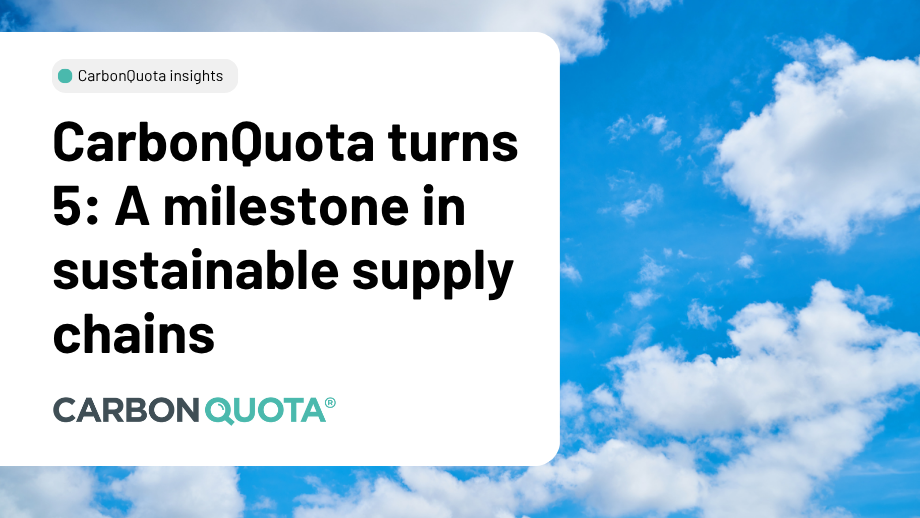A note from CarbonQuota’s Chairman, Guy Strafford
Over a year into worrying about how to shed light on bringing visibility of carbon emissions and after over 25 years looking at procurement and supply chain, here are five reflections.
- Supply chains are complex, so gaining end-to-end visibility is tough and the biggest opportunities are not where they first appear.
- Going down layers in the supply chain is hard, so integration with vendors’ ERP / MRP is needed to get the useful real-time data.
- Getting useful real-time data requires product level information and this is also hard, so data capture has to be automated.
- Automation of industry ERP platforms is hard which is going to split the market into vertical segments serviced by specialists who know how to do it.
- The specialists will need to be collated, so there will be a need for providers to pull all the data together (and separate auditors to validate ESG reports).
The big change in 2023 was that the Sustainability and Procurement teams involved in this space who want integrity in their emission reporting answers, have realised the need for accuracy. 2024 is about how this plays out.
Three predictions:
- Only the robust and granular technology platforms will survive. There will be casualties as ineffective generalist reporting methodologies get sieved out of the market.
- No one platform can do it all today. So the market will evolve towards vertical emissions specialists who calculate line item / real-time emissions.
- The companies’ buying platforms also need consulting support – this is going to make for interesting collaboration opportunities across the emissions reporting space over the next 24 months.
The big issue – smaller companies:
However, the piece that has been fully understood is how smaller companies provide credible emission transparency, and not just how big corporates do it. Smaller businesses further down the chain simply do not have the skills and resource to be able to address the problem easily. Perhaps my fourth prediction will prove to be that we will start to see this addressed more comprehensively in 2024.
Either way, 2024 is shaping up to be an exciting time for carbon emissions reporting.



